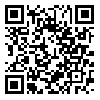Volume 12, Issue 5 (September & October 2021)
BCN 2021, 12(5): 681-692 |
Back to browse issues page
Download citation:
BibTeX | RIS | EndNote | Medlars | ProCite | Reference Manager | RefWorks
Send citation to:



BibTeX | RIS | EndNote | Medlars | ProCite | Reference Manager | RefWorks
Send citation to:
Mourad I M, Noor N A, Mohammed H S, Aboul Ezz H S, Khadrawy Y A. A Neurochemical and Electrophysiological Study on the Combined Effects of Caffeine and Nicotine in the Cortex of Rats. BCN 2021; 12 (5) :681-692
URL: http://bcn.iums.ac.ir/article-1-1631-en.html
URL: http://bcn.iums.ac.ir/article-1-1631-en.html
Iman M. Mourad1 

 , Neveen A. Noor1
, Neveen A. Noor1 

 , Haitham S. Mohammed2
, Haitham S. Mohammed2 

 , Heba S. Aboul Ezz1
, Heba S. Aboul Ezz1 

 , Yasser A. Khadrawy *3
, Yasser A. Khadrawy *3 




 , Neveen A. Noor1
, Neveen A. Noor1 

 , Haitham S. Mohammed2
, Haitham S. Mohammed2 

 , Heba S. Aboul Ezz1
, Heba S. Aboul Ezz1 

 , Yasser A. Khadrawy *3
, Yasser A. Khadrawy *3 


1- Department of Zoology, School of Science, Cairo University, Egypt.
2- Department of Biophysics, School of Science, Cairo University, Egypt.
3- Department of Medical Physiology, Medical Division, National Research Center, Egypt.
2- Department of Biophysics, School of Science, Cairo University, Egypt.
3- Department of Medical Physiology, Medical Division, National Research Center, Egypt.
Abstract:
Introduction: Caffeine and nicotine are the most widely consumed psychostimulants worldwide. Although the effects of each drug alone on the central nervous system have been studied extensively, the literature on the neurochemical and electrophysiological effects of their combined treatments is scarce. The present study investigated the cortical electrophysiological and neurochemical alterations induced by acute administration of caffeine and nicotine in rats.
Methods: The rats received caffeine and nicotine at a 1-hour interval between the two treatments.
Results: Caffeine and nicotine administration resulted in a significant decrease in the concentrations of cortical amino acid neurotransmitters, namely glutamate, aspartate, glycine, and taurine, while γ-aminobutyric acid (GABA) significantly increased. Increased cortical lipid peroxidation and reduced glutathione and nitric oxide levels and acetylcholinesterase and Na⁺/K⁺-ATPase activities were also observed. The Electroencephalogram (EEG) showed an increase in delta frequency power band, whereas theta, beta-1, and beta-2 decreased after caffeine and nicotine treatment.
Conclusion: These findings suggest that caffeine and nicotine adversely exacerbate their stimulant effects manifested by the EEG changes mediated by increasing cholinergic transmission and disturbing the balance between the excitatory and inhibitory amino acids leading to oxidative stress.
Methods: The rats received caffeine and nicotine at a 1-hour interval between the two treatments.
Results: Caffeine and nicotine administration resulted in a significant decrease in the concentrations of cortical amino acid neurotransmitters, namely glutamate, aspartate, glycine, and taurine, while γ-aminobutyric acid (GABA) significantly increased. Increased cortical lipid peroxidation and reduced glutathione and nitric oxide levels and acetylcholinesterase and Na⁺/K⁺-ATPase activities were also observed. The Electroencephalogram (EEG) showed an increase in delta frequency power band, whereas theta, beta-1, and beta-2 decreased after caffeine and nicotine treatment.
Conclusion: These findings suggest that caffeine and nicotine adversely exacerbate their stimulant effects manifested by the EEG changes mediated by increasing cholinergic transmission and disturbing the balance between the excitatory and inhibitory amino acids leading to oxidative stress.
Type of Study: Original |
Subject:
Cellular and molecular Neuroscience
Received: 2019/10/15 | Accepted: 2020/07/5 | Published: 2021/09/1
Received: 2019/10/15 | Accepted: 2020/07/5 | Published: 2021/09/1
Send email to the article author
| Rights and permissions | |
 |
This work is licensed under a Creative Commons Attribution-NonCommercial 4.0 International License. |





